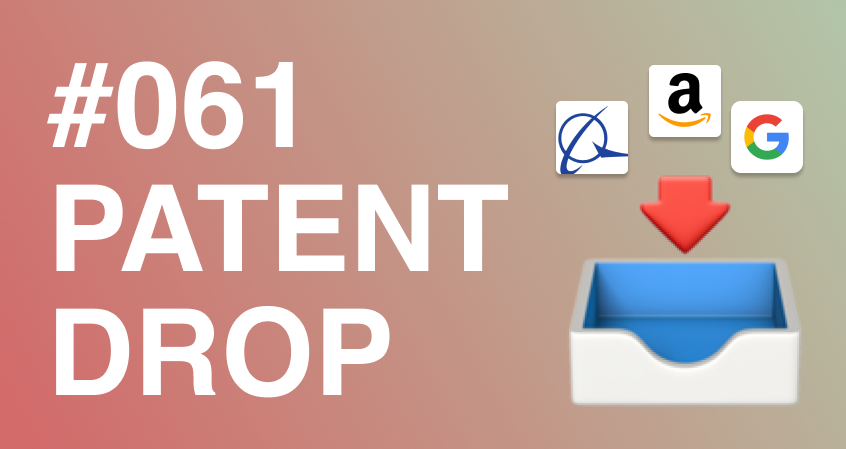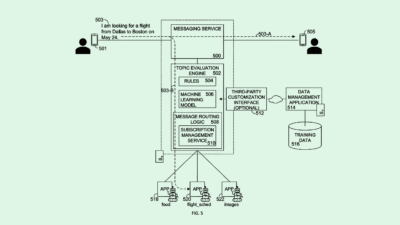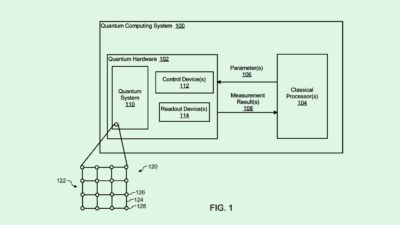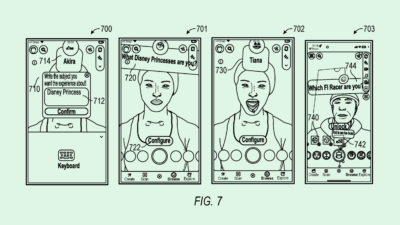Sign up to uncover the latest in emerging technology.
Plus: Boeing’s AI inspector, Google’s tour guide and more.
Happy Thursday and welcome to Patent Drop!
Before we jump in: Are you interested in promoting your company an audience of 15k highly engaged technologists, engineers, product strategists, and analysts? Apply to be a Patent Drop marketing partner here.
This morning, we’re taking a look at Amazon’s plan to make Alexa listen to the words you don’t say, Boeing’s goal to catch every loose screw, and Google’s plan to be your pocket-sized tour guide. Let’s get into it.
#1. “Alexa, be my therapist”
As anyone in a relationship will tell you, it’s not just about what you say, but how you say it. Now Amazon wants Alexa to be the ideal partner.
The company is looking to patent a system for “sentiment detection” for audio input. Essentially, Amazon wants to improve Alexa to the point where it can read the emotions in your voice, on top of what you’re saying. According to the application, the system is trained using “acoustic information and lexical information to determine a sentiment corresponding to an utterance.”
Amazon points out a few interesting use cases. In one example, a user wants to add an emoji to a text: If you sound happy, frustrated or sad and say “Alexa, add an emoji,” it will choose one based on that emotion. In another, a user says “Alexa, recommend a movie,” and the system makes recommendations based on how they sound.
The company said in its application that this kind of speech processing could be used to “improve human-computer interactions.” So bad news if you have a habit of telling your smart speaker to shut up when a timer goes off.
Amazon might run into a number of issues to consider if it wants to make this idea a household reality. What if a user doesn’t emote much in their tone of voice? What if a user lives in a household with multiple people that emote differently? What about differing emotional nuances across cultures?
While these sound like major roadblocks, the reality is that this technology is only in its very early stages, Eldad Postan-Koren, co-founder and CEO at WINN.AI, told me. For now, Amazon likely isn’t trying to train AI on cultural and geographical nuances, but is trying to create a system that can read basic emotions, like happiness, sadness or anger, which are often expressed similarly throughout cultures.
“Nuances will be tough,” Postan-Koren said. “But part of our human behavior seems to be that we interact the same in a very basic way.”
Amazon didn’t lay out how this kind of tech would help its business. But detecting emotions and their nuances could be the next big challenge in speech recognition tech, Postan-Koren said. If that’s the case, Amazon may just be trying to stay at the front of the pack.
“Lots of our communication comes from the subtext – the things that we don’t say,” Postan-Koren said. “I think that if we’re willing to train AI to help us … understanding sentiment can help it understand human communication.”
So maybe it’s time to start listening less to what your smart speaker is saying and more what your smart speaker is saying.
#2. Boeing’s nuts and bolts
Airplanes have a lot of parts. Boeing wants to make sure they’re all in the right place.
The manufacturer filed a patent application for “anomaly detection” which uses AR and AI during inspections. Essentially, the tech works by detecting abnormalities like missing parts, debris, loose bolts or disconnected wires through photographic data of different parts of the jet. AI would find these vulnerabilities, and AR would point them out to the user through a pair of smart glasses, a mobile phone, or a combination of the two.
“a modern passenger jet may have several million different parts,” the company said in its application. “The relatively large number of parts and the ongoing inspection requirements of the aircraft increase the difficulty of detecting anomalies in the aircraft.”

Utilizing an AI for assistance in safety inspections like this has the potential to limit human error by catching small things that the naked eye may miss, Kevin Strait, managing partner at Anzen Legal Group and former R&D engineer, told me. Plus, as the system is used more and more, it will only get better, Strait said, making Boeing’s aircrafts increasingly safer along the way.
“We are not likely to take humans out of the process,” he said. “But that human is going to walk around with the camera or glasses, and a computer is going to help them interrogate that aircraft for the many, many, many things on their checklist.”
Any boost to its safety protocols would give the company a leg up, as it’s faced its fair share of scrutiny and backlash from regulators for its safety practices. In September, the company settled with the SEC for $200 million for misleading regulators on the safety of the 737 Max. And earlier this year, the FAA formed a committee to review Boeing’s safety systems.
But safety isn’t the only benefit Boeing stands to gain from implementing a system like this, Strait said. By giving inspectors an AI assistant, Boeing could save big on labor. Not only would this system cut down the need for as many inspectors, but those workers wouldn’t need as much of the specific and in-depth training that’s currently required. Strait likened the system to an automatic electronic defibrillator: Rather than needing a trained medical professional to help during an emergency, anyone could operate those kits and step in to help. “You turn it on, and it will tell you what to do. You can’t mess it up.”
#3. Google, the tour guide
Have you ever found yourself hungry in an unfamiliar part of your city, or stopped somewhere new on a road trip looking for local landmarks? Google wants to point you in the right direction.
The company filed a patent application for “visual recognition” technology that uses location data. Think of it as an “in-world” version of Google Maps: A person can take a photo of their surroundings, then Google can show them a list of entities in the region, like historical sites or businesses, and provide more information on them.
For example, if a user takes a photo of the Eiffel Tower, Google will pull up results answering questions like the tower’s height, its history. If the photo was taken from far enough away, Google will provide directions to get to it. The more that people use this function, the better the search results would get.
“Visual recognition results may be used to enhance inputs to backend recognizers and may be used to rank obtained recognition results,” The company said in its application.
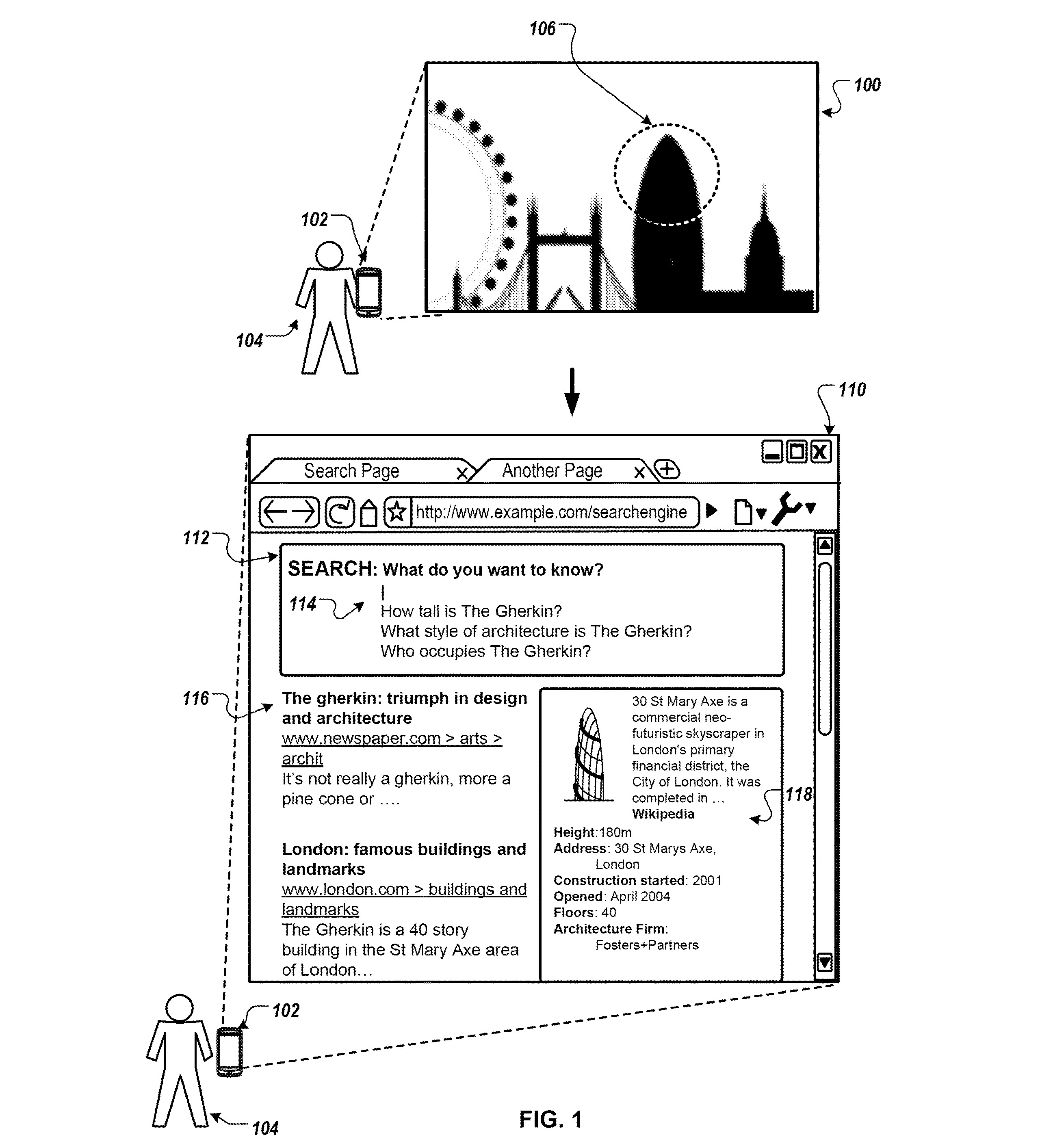
While Google didn’t mention potential commercial uses of this tool in the application, this tech could provide a promising new avenue to sell digital ads. Say a user takes a photo of a busy street in a new city to get information on their surroundings. What’s stopping Google from selling ad space to local businesses like the company does with its normal search engine, so that their website or shop ranks higher than others?
Google already offers businesses the ability to put local search ads in Google Maps, and target ads to certain geographies. If Google’s pocket-sized tour guide is eventually rolled out to users, adding a way to make some money from it wouldn’t be a surprise. And with its ad sales currently taking a beating as the sector slows, every penny counts.
There is one obstacle: The DOJ’s antitrust lawsuit filed last week going after Google’s moneymaker. The lawsuit alleges that the company has an illegal monopoly over the digital advertising market as a whole, and asks a federal judge to order Google to split its advertising segment from the rest of its business.
While a potential new revenue stream from this tech might give the company a little boost, it could be rendered moot if the lawsuit rules in the Justice Department’s favor by the time it’s rolled out.
Extra Drops
Here are a few other fun patents we wanted to share.
Ford wants to give you a smoother ride. The car manufacturer wants to patent a method to estimate the “road roughness index,” and adjust the car’s operation based on that metric.
Microsoft wants to catch photoshop fails. The company seeks to patent “forgery detection” for face images that can catch when a photo has been tampered with – a potentially helpful tool with the proliferation of deepfakes.
Sony is trying to make the next Wii Fit. The company wants to patent “health and wellness gamification” which collects users’ biometric data to encourage them to reach fitness goals by translating their achievements into a game.
What else is new?
OpenAI launched its ChatGPT Plus subscription for $20 per month. The service reached a record 100 million users just two months after launch, making it the fastest-growing consumer app in history, a UBS study reported.
The FTC lost its anti-trust lawsuit against Meta after a federal judge refused to stop its acquisition of VR startup Within Unlimited.
Michael Bennet, a Democratic Senator on the intelligence committee urged Apple and Alphabet to remove TikTok from their app stores, citing concern for national security.
Enjoying Patent Drop? Apply now to be our marketing partner and gain access to a highly engaged audience of 15,000 techies, analysts and strategists. Get in touch with us here.
Have any comments, tips or suggestions? Drop us a line! Email us at admin@patentdrop.xyz or shoot us a DM on Twitter @patentdrop.
